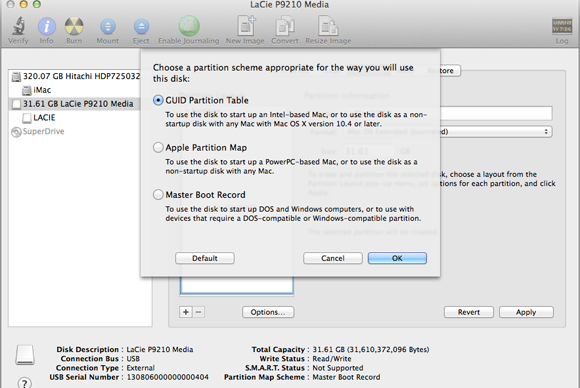Important: As a precaution, it's best to back up your data before creating new partitions on your device. In the Disk Utility app on your Mac, select a volume in the.
.What Is a Partition?The partitioning of a hard drive occurs after the drive has been but before it is logically formatted. It involves creating areas on the disk where data will not be mixed.It can be used for example, to install different that do not use the same file system. Therefore, logically there will be at least as many partitions as there are operating systems using different file systems.
If you are using just one operating system, a single partition of the full size of the disk is sufficient. That is unless you want to create several partitions so as to have several drives on which data is kept separately.There are three types of partitions: primary partitions, extended partitions and logical drives. A disk may contain up to four primary partitions (only one of which can be active), or three primary partitions and one extended partition. In the extended partition, the user can create logical drives (i.e. 'simulate' several smaller-sized hard drives).Here is an example of where the disk contains one primary partition and one extended partition made up of three logical drives:For systems (DOS, Windows 9x), only the primary partition is bootable and is, therefore, the only one on which the operating system can be started.Master Boot RecordThe boot sector (called the Master Boot Record or MBR) is the first sector of a hard drive (cylinder 0, head 0, sector 1). It contains the main partition table and the code, called the boot loader, which when loaded into memory, will allow the system to boot up.After it is loaded into memory, this program will determine from which system partition to boot, and will start the program (called the bootstrap), which will start up the operating system present on that partition.This disc sector also contains all of the information concerning the hard drive (i.e. Manufacturer, serial number, number of bytes per sector, number of sectors per cluster, number of sectors, etc.).
This sector is therefore the most important one on the hard drive and is also used by the setup to recognise the hard drive.
Partitioning doesn't affects performance so much, but file systems and its configuration affects perfomance yes. Look at this. On our internal developement virtual machines we use three partitions:./root partition - housing mostly static operating system stuff./var partition - for all dynamic data./home partition - this is where development takes place with the user accounts of the developersThe reason to separate the partitions is to avoid a system halt due to full filesystem. If /home is full - does not matter. No running processes are affected. Delete something, enlarge online and continue./ should not change much (the only exception is /tmp - but files there are usually never big)./var is the place where /var/tmp and all other 'live' data resides (including /var/log).
A full /var/log is still the number one reason for system/application failures, so /var has to be big enough and there has to be a warning in time when space is becoming sparse there.On physical machines, where disk space does not matter that much, we divide up additional 'partitions' (mostly LVs), including: /var, /var/tmp, /var/log, /tmp, /boot. But these are production machines, where uptime matters. I used to make separate partitions for /, /home, /usr/local and /var, but I always seemed to end up with some sort of interactions across partitions. If I did install a different distro, I would want to have the unused dotfiles removed for simplicity, so I still made a backup and wiped /home.As for making a /var partition, I made so many sites at school (100 or so), with such a large variance in sizes between media heavy sites and text only exercises, that it was impossible for me to accurately estimate the amount of space to allocate.Now, I just have one partition for everything, and I don't come anywhere near filling it up. Personal media (movies, games, shows) go on an external HD, so that I can take it to a friend's house. For virtual machines, which have to be virtual appliances in virtualbox if you want to move them, I like to have a dedicated flash drive for each one.I've never seen a HD crash, but if it did, I don't think it would matter how the physical drive was partitioned; it would just be dead.

The riskiest thing I've ever done with my HD is resizing partitions, which is no longer necessary.
The way I dealt with this situation is to make sure that every host has access to the common place where files are. 
Related Pages
- Danny Krivit Edits By Mr.k Vol. 2 Rar
- Test Server For Mac
- The Sims4 Mac Download. The Sims 4 Download For Mac
- Time Series Brockwell Solution Manual
- Avertv For Mac
- Free Download Puffin Web Browser Pro For Android
- Sitesucker Download Options For Firefox
- Rae Rae Riddim 1996 Rar
- Audi Navi Mmi 2g 3g Update Neu 2019
